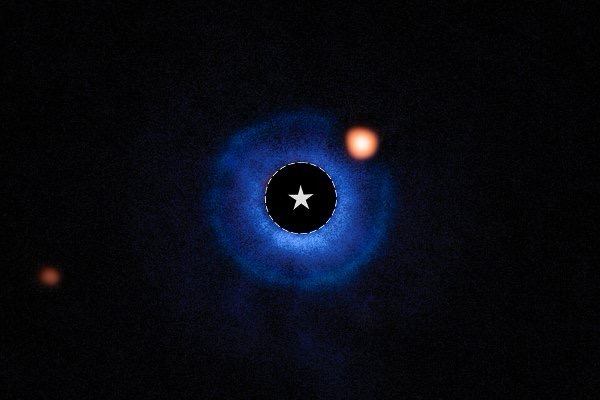First Capture of Lightest Exoplanet Marks New Milestone for Webb’s Imaging Technology

NASA’s James Webb Space Telescope (JWST) has recently made a groundbreaking discovery by directly observing a previously unrecorded exoplanet, TWA 7b, using its advanced infrared instruments. This newly discovered gas giant is located in the constellation Antlia, approximately 110 light-years from Earth. With a mass roughly equivalent to that of Saturn, TWA 7b is the lowest-mass exoplanet ever detected through direct imaging.
The planet orbits a very young star named TWA 7, which is estimated to be only about 6 million years old—a stark contrast to our solar system’s 4.5 billion-year history, making it a “newborn” stellar system. The key to successfully capturing TWA 7b lies in JWST’s onboard coronagraph, a technology that blocks out the bright light of the host star, allowing the faint planet to be revealed.
TWA 7b lies within a dusty ring surrounding its star, and its orbit is approximately 52 times farther from its star than Earth is from the Sun—far beyond the orbit of Neptune in our solar system. This vast distance makes it difficult to detect with traditional methods like the transit technique, but JWST overcame this limitation thanks to its high sensitivity and powerful infrared capabilities.
Scientists currently know little about the planet’s atmospheric composition and are unsure whether it is still growing. However, researchers highlight that this discovery demonstrates JWST’s potential to uncover low-mass, young exoplanets. It raises hopes for future detections of Earth-mass planets, advancing the search for possible signs of life beyond our solar system.
- 93 reads
Human Rights
Fostering a More Humane World: The 28th Eurasian Economic Summi

Conscience, Hope, and Action: Keys to Global Peace and Sustainability

Ringing FOWPAL’s Peace Bell for the World:Nobel Peace Prize Laureates’ Visions and Actions

Protecting the World’s Cultural Diversity for a Sustainable Future

Puppet Show I International Friendship Day 2020

